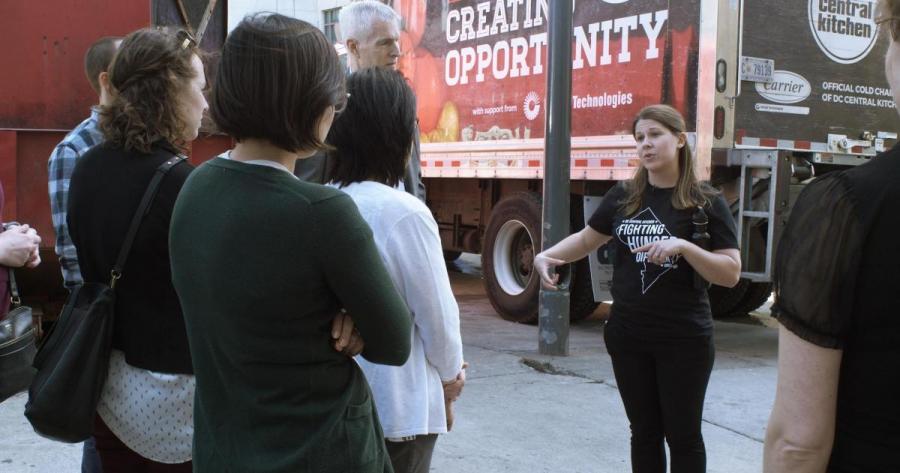A SESYNC science team assesses food sustainability interventions through an economic lens

Gathered together in an alleyway in the heart of Washington D.C., a group of researchers lean in to hear over the roar of a refrigerated delivery truck unloading food recovered from a local grocery store. The representative from DC Central Kitchen explains how the kitchen serves 5,000 meals daily by using 3,000 pounds of surplus food recovered from various grocery stores and farms in the local community. This intervention program is a notable example of how to reclaim food, typically wasted during production or distribution, and use it to feed people, which is a valuable insight for the research team.
A SESYNC-supported science team, led by Mary Muth, director of food, nutrition, and obesity policy research at RTI International, brought together economists, environmental scientists, members of the private sector and the non-profit sphere to tackle the economic and environmental challenges of food loss and food waste. Their D.C. field trip provided insight into real-world challenges of reducing food loss and waste. In their new review article on the sustainability aspects of food loss and waste, published in the October 2019 issue (now online) of the journal Science of the Total Environment, the team states that within the United States, estimates indicate that 30% to 50% of food is lost or wasted throughout the food supply chain. Their analysis provides background for modeling efforts for prioritizing investments in intervention programs that limit or reduce loss and waste.
The waste or loss of food along the food supply chain represents far more than the food scraps left on a plate or unsold produce in a grocery store; the amount of water, land, energy and time must also be considered as wasted in the process when food is not consumed. Furthermore, emissions from decomposition of wasted food in landfills contribute to environmental impacts, but a substantial portion occurs in the final phase of the food system with the consumer, both in foodservice settings as well as at home.
In an interview, Muth explained that the science team wanted to get a sense of the diversity of interventions that groups and institutions are implementing, and to see if there are ways to prioritize resources more effectively. Their approach to the problem integrates an economic framework to better understand the costs to industry, consumers and government relative to the environmental benefits.
While programs like DC Central Kitchen are an innovative part of the solution, there is an urgent need to change consumer behavior and develop awareness of what is lost when food is wasted, explained Muth. The authors argue that prevention of food waste should be prioritized, considering the high amount of water, land and energy resources that producing and transporting food represents in the United States. The paper calls for the need to compare the cost-effectiveness of specific interventions along the supply chain to reduce food waste to help prioritize the leverage points that benefit both the environment and the stakeholders in the food system.